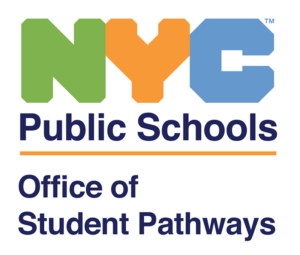Work-Based Learning - Workplace Challenges Activity Guide

Workplace Challenge Fact Sheet
What is a Workplace Challenge?
A Workplace Challenge is a Career Preparation activity where small groups of students (four to six per team) are engaged in solving a real-world problem or a challenge issued by an employer. The challenge is identified by the employer in consultation with the work-based learning coordinator and a classroom teacher. The structure of the challenge is based upon effective project-based learning approaches, enhanced by a focus on the targeted career pathway and an authentic problem or issue faced by an employer partner.
Students work as a team to identify possible solutions. They then create and deliver a presentation on their solutions to the employer. Designed to meet specific learning outcomes, workplace challenges are educationally rich, are tied to the curriculum, and help students connect what they’re learning in school with the workplace.
Workplace Challenges are designed to:
- Provide exposure to potential careers in an industry of interest.
- Develop problem solving and research skills.
- Develop teamwork and presentation skills.
- Help students make the connection between school and the workplace.
- Inform career planning.
Workplace Challenges are structured to:
- Offer students the opportunity to explore and practice in a field of interest.
- Give students the opportunity to enhance the relevance of academic concepts through the application of applied knowledge.
- Build knowledge about the education and training needed for a particular career path and entry into the industry.
- Allow for Teacher/Employer interaction to support the challenge.
Workplace Challenges are supported by:
- Classroom preparation, including research on the industry and participating businesses.
- Employer orientation and support.
- Opportunities to reflect upon the experience verbally and in writing.
Workplace Challenges are connected to:
- Individual career development/training plans.
- Future work-based learning activities.
- Identifiable academic curricular goals
- The student’s next steps.
Go Deeper:
- Have several teams of students address the same challenge and reward the most innovative solutions through a competition—with the employer or a team of employers serving as the judge(s).
- After the presentation of the solution and critique by the employer partner, have the team(s) revisit their approach, define a new solution and present it to the employer partner(s).
- Sequence a series of challenges for the same team of students so the experiences build on one another.
- Model aspects of the challenge after reality TV shows such as “Shark Tank” (with the students pitching their solutions to a group of employers).
- Have the challenge flow into an internship for successful students.
For further guidance, forms, tools and assistance in managing a Workplace Challenge please see the New York City Schools CPP Tracking System.
Workplace Challenge Lite:
If the time and intensity of the workplace challenge described here is difficult to apply in your program model, consider a “workplace challenge lite.” Maintain key components of the challenge (employer issues a real-world challenge, students work together to define a solution and present to the employer) but identify a simpler problem with the employer that a small group of students might define over a single two- or three-hour session.
Workplace challenges are one activity in the continuum of authentic work-based experiences provided to all students engaged in career-related programs or course of study in New York City Public Schools.
Workplace Challenge Activities are recognized as an “accepted and valid WBL activity” by NYSED and the New York City Public Schools for specific credit purposes.
Required Materials
Implementation Materials
Support Materials
Virtual Workplace Challenge

Quick tips for Work-Based Learning Coordinators* to ensure a successful Workplace Challenge
Before
During
After
*In New York State, this includes certified work-based learning coordinators and others who facilitate, arrange and support work-based learning activities for students.
